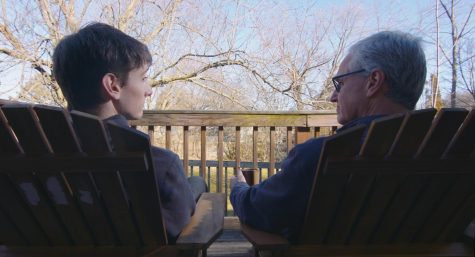SPAUD program expanding to meet demand
Calvin accepted the first cohort of students into its new online MA in speech pathology program last January.
The flexibility of the online program — which is designed to be completed in two or three years — has opened up the expanding field of speech-language pathology to a wider range of students, according to Brian Kreisman, chair of the speech pathology and audiology department.
SPAUD at Calvin
Calvin’s residential SPAUD program includes a four-year bachelor’s program and a two-year master’s program, with an option to complete both the BA and the MA in five years. According to Kreisman, the five-year BA-MA program is a major draw for traditional students.
The online program tends to draw more nontraditional students with a degree in another field.
“Many of them are already working as speech pathology assistants or in some related field, like education, and for most of the distance students, but not all of them, they’re nontraditional students looking for a second career,” said Kreisman.
The online program has also drawn students from a wider range of ethnicities to a field that lacks diversity. As of 2021, 95% of speech-language pathologists in Michigan and many other states were white, according to the American Speech-Language-Hearing Association.
“[In] our distance program … we have closer to a third that have identified in some way as being non-white,” said Kreisman.
The online expansion of Calvin’s SPAUD department reflects a high demand for speech-language pathologists nationwide. The Bureau of Labor Statistics predicts that employment of speech-language pathologists will grow 21% in the next decade, which is faster than most other jobs.
Part of the reason for this growth, like the growth in related fields such as physical therapy, occupational therapy and nursing, is the aging Baby Boomer population, according to Sarah Baar, a clinical instructor.
However, speech-language pathologists can work with patients of all ages, including prematurely-born newborns and schoolchildren.
“In our area, school-based positions are easier to find and more in need. Any type of school setting that tends to be more urban or more rural … often have open vacancies for speech pathologies,” said Baar.
Challenges
Baar, who has worked as a speech-language pathologist for 15 years, started her first year at Calvin as a clinical instructor this fall.
Calvin hosts an in-person clinic in the DeVos Communication Center, but the online students work with clients via teletherapy. COVID-19 played a role in preparing the SPAUD department to do distance clinicals with the online program.
“Within the week the pandemic started, we had a system in place so all our current local clients could be seen via teletherapy,” said Baar.
After a year of doing clinicals with Calvin’s instructor, students must complete three externships, including one in a medical-based setting and one in a school-based setting. Elizabeth Cronkite, the distance education clinic director, was hired this year to coordinate clinicals and externships for the online program.
Establishing new connections between working speech-language pathologists and students and newer professionals is currently a large part of Cronkite’s job. Because supervised experience in the field is necessary for employment, speech-language pathologists are usually expected to mentor students during clinical placements.
“As a working speech pathologist, in most places — that’s part of your job description,” said Cronkite.
“It’s tough right now because we’re in the ‘making-relationships’ stage.
However, the out-of-state facilities are not as familiar with Calvin as many in-state facilities, and out-of-state-facilities sometimes have standing relationships with other universities, according to Cronkite.
“It’s tough right now because we’re in the ‘making-relationships’ stage,” said Cronkite.
According to Kreisman, securing clinical placements has been one of the biggest “hold-ups” in expanding the program. Currently, the program has met its goal of accepting about 60students a year: 40 in the fall and 20 in the spring.
In the next couple years, the department will decide whether the program can expand further.
“Right now the goal is to take the spring cohort and the fall cohort, and by then, figure out where we’re at and see whether we can ramp up any further than that,” said Kreisman.






